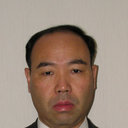In search of new biological activities of isolates from Odontoglossum Harvengtense 'Tutu'.
キーワード
概要
BACKGROUND
In the current study, we isolated four known compounds, two phenanthrenes, 2,5-dihydroxy-4,9-dimethoxy phenanthrene [1] and 4-methoxyphenanthrene-2,7-diol (flavanthrinin) [2], one phenanthrenequinone, 5-hydroxy-2,3-dimethoxy-1,4-phenanthrenequinone [3], and one flavone, 3,5,7-trihydroxyflavone (galangin) [4], from the ethyl acetate (EtOAc) extract of Odontoglossum Harvengtense 'Tutu' through bioassay-guided fractionation, and investigated their biological activities.
METHODS
The isolated compounds were identified with spectroscopic analysis and through comparison to literature values. Cytotoxic activity towards human tumor and normal cells was determined by the 3-(4,5-dimethylthiazol-2-yl)-2,5-diphenyltetrazolium bromide (MTT) method. Nitric oxide (NO) was determined by the Griess method. Radical scavenging activity was determined by electron spin resonance (ESR) spectroscopy. Osteoclastogenesis was monitored by tartrate-resistant acid phosphatase (TRAP) activity.
RESULTS
The compounds had slightly higher cytotoxicity towards human oral squamous cell carcinoma and leukemia cell lines as compared with human normal oral cells, yielding a tumor specificity value of 1.1-2.7. Among these four compounds, 1 most potently inhibited the lipopolysaccharide (LPS)-stimulated NO production and the receptor activator of nuclear factor-κB ligand (RANKL)-stimulated osteoclastogenesis by mouse macrophage-like RAW264.7 cells. Micromolar concentrations of 1 scavenged the NO radical produced from 1-hydroxy-2-oxo-3-(N-3-methyl-3-aminopropyl)-3-methyl-1-triazene.
CONCLUSIONS
The present study demonstrated, for the first time, that 1 inhibited both macrophage activation and osteoclast differentiation, suggesting its possible anti-inflammatory action.


